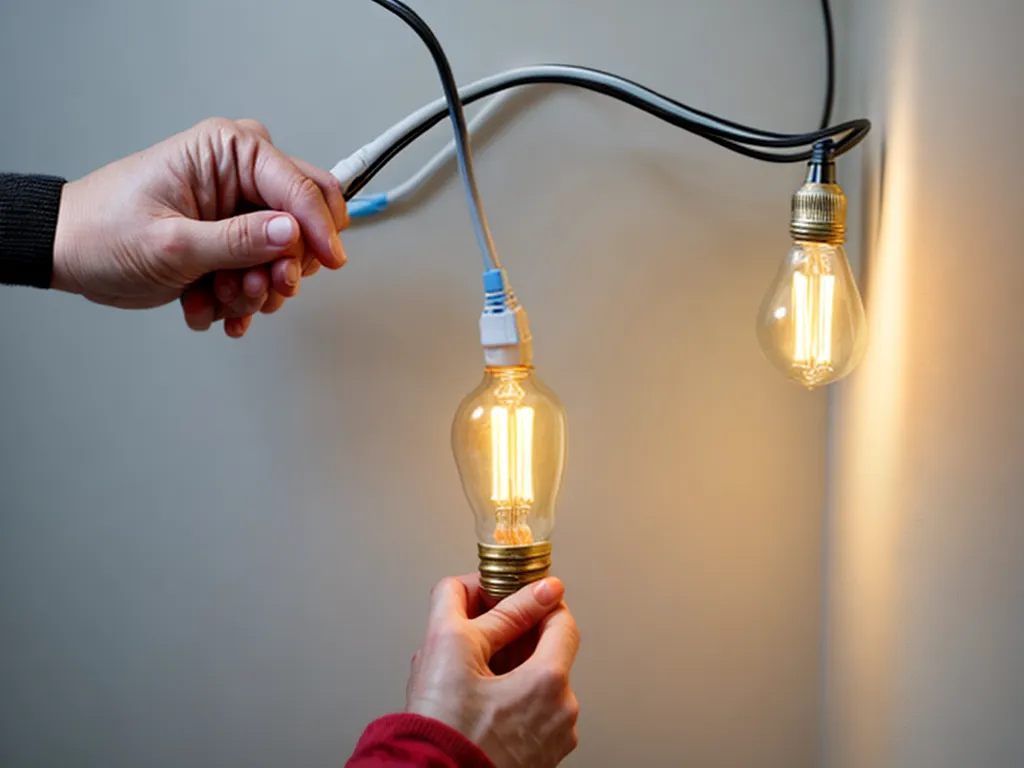
Changing light bulbs seems like a simple task, but it does carry some risk of electric shock if proper precautions are not taken. Electric shocks, even from the relatively low voltage in household electrical systems, can cause burns or even stop your heart. However, there are several easy things you can do to change light bulbs safely.
Turn Off the Power Supply
The most important precaution to take before changing a light bulb is to turn off the power supply to the light fixture and verify that the power is off. There are a couple ways to do this:
-
Locate the circuit breaker box or fuse box in your home. Identify the circuit breaker or fuse that controls the light you are going to change. Switch the circuit breaker to the "off" position or completely remove the fuse.
-
If the light fixture is controlled by a light switch, simply turn the switch to the "off" position. Then flip it on briefly to double check the bulb does not light up.
Always verify the light is not receiving power before proceeding by flipping the switch on briefly. If the bulb does not light up, you can safely work on the fixture.
Use a Non-Conductive Ladder
To reach some light fixtures, you may need to use a ladder. Only use a non-conductive fiberglass or wood ladder when working around electricity. Never use a metallic ladder, which can conduct electricity and shock you.
Inspect the non-conductive ladder for any cracks or damage before use. Make sure it is placed securely on a level surface. Have a helper hold the ladder steady if needed.
Wear Shoes and Don't Overreach
While on the ladder changing the bulb, take care not to inadvertently make contact with any live wires. Wear non-conductive rubber-soled shoes and avoid any unnecessary reaching or contorting that could bring your body near wires.
Have the new bulb ready so you can swap it quickly. Maintain three points of stable contact on the ladder at all times, moving one hand at a time. If you feel off-balance or cannot comfortably reach the light fixture, come down and reposition the ladder closer.
Avoid Touching the Bulb with Bare Skin
Some bulbs can get extremely hot while in use, so skin contact could burn you even after the bulb is switched off. To avoid this, use a rag or glove when handling the old bulb as you remove it, and the new bulb as you install it.
This will also protect your fingers from sharp glass if the bulb happens to break during installation. Carefully twist the bulb to avoid this.
Check for Damage
Before turning the power back on, visually inspect the light fixture wires for any damage. Snapped or frayed wires can expose live conductors. Also check that the new bulb is secure in the socket and no bare contacts are exposed.
If you notice any damage to wires or the fixture, turn the power back off and call an electrician before returning power to the circuit.
Turn Power Back On Safely
Once you have replaced the bulb and inspected for damage, you can turn the power back on. Flip the light switch at a distance, while standing on the floor, before climbing down the ladder. Verify the new bulb illuminates when powered on.
If it does not light, turn the power back off and re-check your connections and bulb before trying again. Exercise caution until you have confirmed everything is in working order.
Special Considerations for Wet Locations
Extra care should be taken if you are changing bulbs in light fixtures located in wet or damp areas like outdoors or in bathrooms. Water conducts electricity so wet fixtures or bulbs can more easily electrify you.
Consider wearing rubber gloves and shoes in these situations and dry the fixture thoroughly before working on it. Prevent any bulb contact with plumbing fixtures while working.
When to Call an Electrician
If at any point you feel unsure about safely changing a difficult-to-reach light bulb, it is better to call a qualified electrician than risk injury. They have specialized tools and training for safely working with electricity.
Likewise if you discover any damaged electrical components behind a fixture cover, damaged circuits should always be left to a professional to avoid creating fire or shock hazards. Taking proper precautions is key to safely changing light bulbs as an informed DIYer.